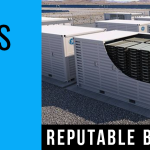 There are many reasons batteries are appearing across the electrical grid—their price is falling, they may save utilities more than they cost, and they can support solar and wind by capturing peaks in production and saving it for troughs.
There are many reasons batteries are appearing across the electrical grid—their price is falling, they may save utilities more than they cost, and they can support solar and wind by capturing peaks in production and saving it for troughs.
But their progress has been slowed by a web of regulations at every level, two grid experts said in Chicago last week.
“We have examples in New York where there are projects ready to go and they can’t get a permit from the Fire Department,” said Richard Kauffman, New York state’s energy czar. “Or there are building-permit related issues. It really raises the cost, the soft cost, a lot.”
In other places, there’s no incentive to store energy when it’s cheap, and sell it when it’s expensive, because it costs the same amount all the time. “There’s not time-of-use pricing in many places, so there’s no financial incentive to shift load,” he said.
Battery manufacturers like Tesla Motors, Panasonic, AES and LG report steady growth. Tesla, AES and Altagas cut the ribbons this week on massive new projects in California. But these companies see far more potential than they have realized. The market, as Tesla’s Elon Musk said, is “staggeringly gigantic.”
It shouldn’t come as a surprise that disruptive technologies like storage get stuck in a legacy system, said Susan Tierney, a former assistant secretary of energy.
“We think of what we’re talking about as energy policy,” Tierney said. “It’s tax policy, it’s land-use policy, it’s fire code—all of these things shape the way that things can be changed. You actually have to solve the inertia in the system on all those engineering, legal, political, financial (levels). All of those things have to fit to make the kind of changes we have.”
The Energy Policy Institute at Chicago invited Tierney and Kauffman to discuss opportunities and obstacles facing cities as they strive for their own clean energy goals, regardless of federal support.





